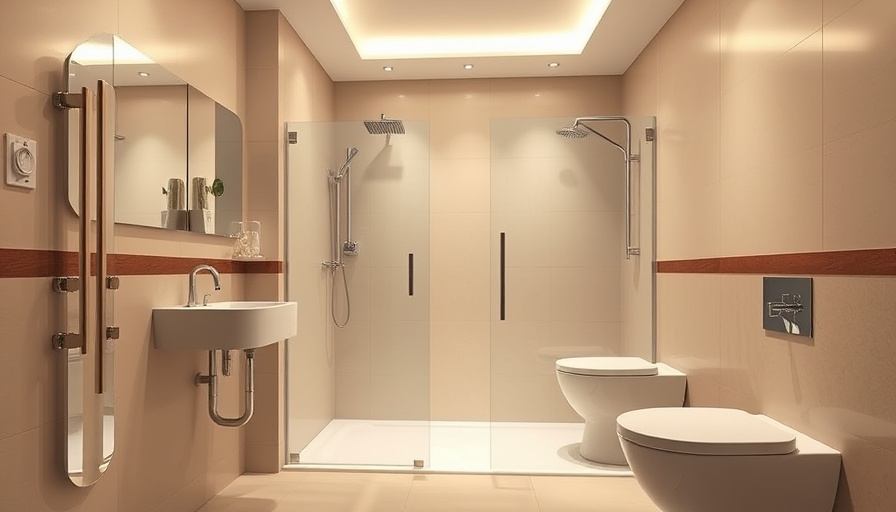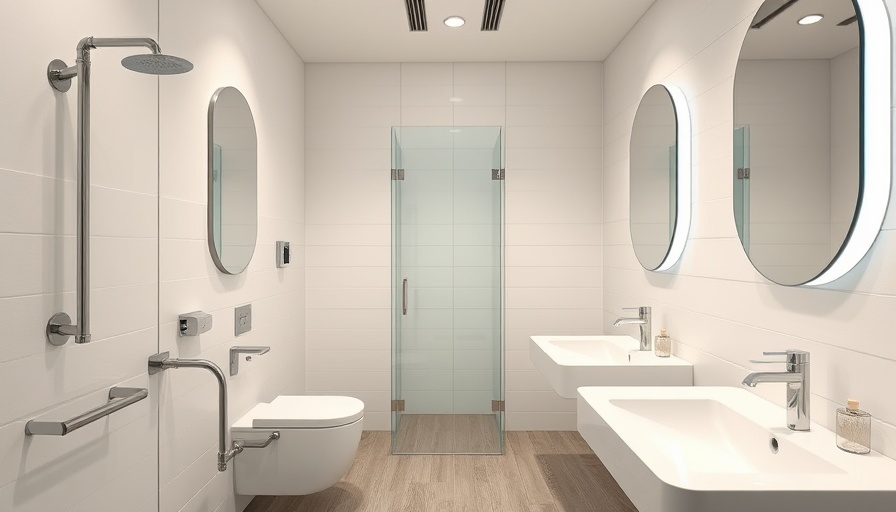
Understanding the Dangers: Why Seniors Face Increased Fall Risks in Bathrooms
As we grow older, maintaining independence becomes a pivotal concern, yet the reality is that nearly one in four seniors will experience a fall each year. This risk is exponentially higher in the bathroom, where moisture and hard surfaces can lead to severe accidents. Statistics from the Centers for Disease Control and Prevention (CDC) show that falls are the leading cause of injury-related deaths among older adults, making it a critical public health issue, especially in regions like Ocean County, where many seniors reside.
Common bathroom hazards include slippery floors, inadequate lighting, and poorly designed fixtures—each contributing to a perilous environment for those with mobility challenges. Acknowledging these dangers is the first step towards creating a safer living space and empowering seniors to remain independent and confident while performing daily activities.
Bathroom Modifications that Enhance Safety and Confidence
Implementing essential home modifications in the bathroom can drastically reduce the risk of falls. One of the most effective changes is the installation of grab bars. These sturdy fixtures, ideally positioned near the toilet and within the shower or bathtub, provide critical support for seniors as they transition in and out of these spaces. It is vital that a licensed professional install these bars securely to ensure maximum effectiveness and reliability.
Another significant improvement is using non-slip mats. Strategically placed non-slip mats outside the tub or shower entrance can prevent dangerous slips caused by wet floors. Additionally, adhesive non-slip strips should be installed inside the bathtub or shower to offer extra grip, creating a more secure bathing experience. For those facing greater mobility challenges, replacing traditional bathtubs with walk-in tubs or step-in showers enhances accessibility and safety.
Optimizing Lighting for Enhanced Bathroom Safety
The role of lighting in preventing falls cannot be overstated. Seniors often encounter difficulties in navigating dark or poorly lit spaces, heightening the risk of accidents. Installing bright, well-distributed lighting helps illuminate potential hazards, allowing for better visibility of wet floors or other obstacles.
Utilizing brightness adjustable LED lights can further enhance safety by providing flexible lighting options based on the time of day or need. Incorporating motion-sensor lights is a savvy addition for those who may struggle with low-light navigation, automatically turning on as they enter the bathroom.
Shifting Perspectives: The Value of Proactive Fall Prevention
Understanding the need for bathroom safety modifications and taking action can lead to a significant shift in a senior’s quality of life by providing peace of mind and fostering independence. Recognizing potential risks allows seniors to take charge of their safety, reinforcing confidence in their abilities to perform daily tasks without fear of falling. This shift in mindset is crucial; it enables seniors to maintain control over their living conditions, ensuring they feel secure and autonomous in their homes.
Practical Tips and Resources for Fall Prevention
Implementing safe practices can greatly reduce the risk of falls. Here are some actionable tips: 1. Adjust the Bathroom Layout: Ensure that items are within easy reach to prevent excessive stretching or bending. 2. Install Waterproof Receptacles: Limit the risk of electric shock by using waterproof electrical outlets but include power strips that can safely manage cords away from wet areas. 3. Wear Non-Slip Shoes: Encourage seniors to wear shoes with good grip even within the house. 4. Regular Check-Ins: Have family members routinely check-in to assess safety and recommend necessary upkeep or additions.
Final Thoughts: Empowering Seniors Towards Safer Bathrooms
Creating safer bathroom spaces involves not just modifications, but also fostering a culture of safety awareness among seniors. Understanding risks and making informed changes is empowering. By addressing bathroom safety proactively, seniors can significantly reduce their risk of falls, promoting not just independence but also a better quality of life.
In Ocean County, where many seniors strive to maintain independence, taking these actionable steps can lead to safer living conditions and a greater peace of mind. If you or someone you know could benefit from this guidance, consider implementing these modifications and reach out to local resources for further assistance.
 Add Row
Add Row  Add
Add 




Write A Comment